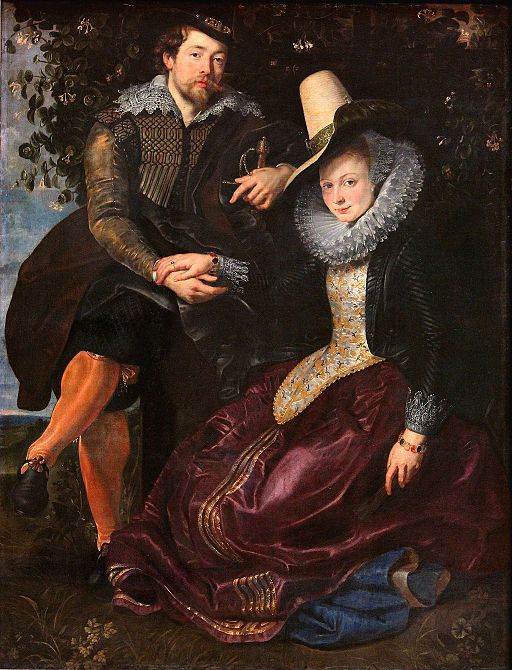I am particularly excited to be announcing the publication of EMLO’s first art historical correspondence, that of the Flemish painter Peter Paul Rubens. For those who have not delved into this painter’s letters before, I should explain that the majority of Rubens’s surviving correspondence is related to his alternative career as a diplomat — he embarked upon this path in his early twenties, working for the Gonzaga in Mantua, and from 1609 was employed in the service of Archduke Albert and Archduchess Isabella in Brussels. Rubens travelled extensively through Italy, Spain, England, and the United Provinces, and as he travelled he dispatched letters, reports of situations, and accounts of his work.

‘Self portrait with his first wife, Isabella Brandt’, by Peter Paul Rubens. 1609–10. Oil on canvas mounted on panel, 178 by 136.5cm. (Alte Pinakothek, Munich, Inv. Nr. 334; source of image: Wikimedia Commons)
Rubens was a close friend to a number of scholars, including Peiresc and Pierre Dupuy, as well as to printers such as Bathasar Moretus, to fellow painters Jan Brueghel the elder and Diego Velázquez, and he was a devoted and caring husband and father. It’s unfortunate that so little of his personal correspondence appears to have survived. Charles Ruelens (1820–1890), inaugural editor of the Codex Diplomaticus Rubenianus (upon which EMLO’s calendar is based), speculated that the number of letters written by Rubens himself over the course of his life — just one side of the correspondence — could have been close to eight thousand in total. From the invaluable six-volumed Codex Diplomaticus Rubenianus, which was initiated in 1887 by Ruelens and completed in 1909 by Max Rooses (1839–1914), and the edition of English translations published in 1966 by Ruth Sanders Magurn, we know today of just 250 letters from Rubens. Despite the overriding diplomatic content of most letters, at times Rubens could not resist mentioning his own painting — his ‘dolcissima professione‘ — as well as the antiquities, art, and coveted collections he encountered. It’s worth noting that significant further work within EMLO could be done on the metadata for these letters: for example, it would be useful to identify the works of art mentioned in the texts, to record, and to link them and, in time, these might form part of an index of works of art mentioned in correspondence which could be charted in particular places at given points in time; people, places, and events mentioned could be identified also and linked within the union catalogue; keywords could be added; manuscript versions and their material details could be collected. There are many lenses through which this correspondence could be examined, and EMLO would welcome enquiries from students searching for topics and subjects on which to work who might consider in the course of their research enriching this, or similar, correspondence metadata. EMLO is extremely accommodating, willing to assist, and anyone interested in working with correspondence in the union catalogue has only to be in touch.
Whilst considering the enrichment of existing resources, I would like to mention also a call released recently to doctoral students or post holders at Higher Education Institutions worldwide and to individuals undertaking scholarly research in the humanities. The Oxford Dictionary of National Biography is offering three research bursaries of £750 each to promote the ODNB online as a source for new research in the humanities. These bursaries are intended, via a defined research project, to promote understanding of British history and culture by means of the Dictionary’s content and its biographical data. Applications should be submitted by 12 June 2016, and further details, together with an application form, may be found on the ODNB website.
